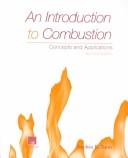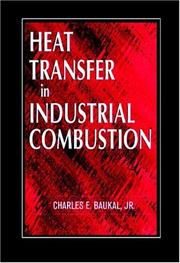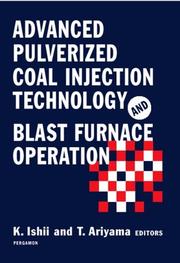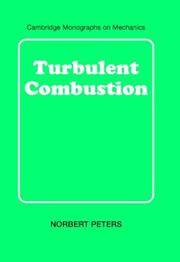| Listing 1 - 4 of 4 |
Sort by
|

ISBN: 0072300965 Year: 2000 Publisher: New York McGraw-Hill
Abstract | Keywords | Export | Availability | Bookmark
 Loading...
Loading...Choose an application
- Reference Manager
- EndNote
- RefWorks (Direct export to RefWorks)

ISBN: 0849316995 Year: 2000 Publisher: Boca Raton (Fla.) : CRC press,
Abstract | Keywords | Export | Availability | Bookmark
 Loading...
Loading...Choose an application
- Reference Manager
- EndNote
- RefWorks (Direct export to RefWorks)
Combustion engineering. --- Heat --- Transmission.

ISBN: 1281026891 9786611026899 0080546358 9780080546353 9781281026897 008043651X 9780080436517 6611026894 Year: 2000 Publisher: Oxford, UK Pergamon
Abstract | Keywords | Export | Availability | Bookmark
 Loading...
Loading...Choose an application
- Reference Manager
- EndNote
- RefWorks (Direct export to RefWorks)
In order to reduce the cost of running blast furnaces (BFs), injected pulverized coal is used rather than coke to fire BFs. As a result of this, unburned fine materials are blown with the gas into the bosh and dead man areas with possible detrimental effects on gas flow and permeability of the coke column. The capacity of the furnace to consume these particles by solution loss is probably one of the limitations to coal injection. It is, therefore, important to understand the physicochemical and aerodynamic behaviour of fines including the change of in-furnace phenomena. The Commit
Coal gasification. --- Coal, Pulverized. --- Combustion engineering. --- Heat engineering --- Pulverized coal --- Coal --- Gasification of coal --- Carbonization --- Distillation, Destructive --- Gas manufacture and works --- Gas producers --- Gasification

ISBN: 0521660823 0511019270 9786610420834 0511173903 0511153201 0511303394 0511612702 1280420839 0511048637 9780511303395 110711795X 9780511019272 9780511048630 9780511612701 6610420831 9781280420832 9780521660822 9780511173905 9780511153204 Year: 2000 Publisher: Cambridge Cambridge University press
Abstract | Keywords | Export | Availability | Bookmark
 Loading...
Loading...Choose an application
- Reference Manager
- EndNote
- RefWorks (Direct export to RefWorks)
The combustion of fossil fuels remains a key technology for the foreseeable future. It is therefore important that we understand the mechanisms of combustion and, in particular, the role of turbulence within this process. Combustion always takes place within a turbulent flow field for two reasons: turbulence increases the mixing process and enhances combustion, but at the same time combustion releases heat which generates flow instability through buoyancy, thus enhancing the transition to turbulence. The four chapters of this book present a thorough introduction to the field of turbulent combustion. After an overview of modeling approaches, the three remaining chapters consider the three distinct cases of premixed, non-premixed, and partially premixed combustion, respectively. This book will be of value to researchers and students of engineering and applied mathematics by demonstrating the current theories of turbulent combustion within a unified presentation of the field.
Combustion engineering. --- Mathematical Sciences --- General and Others --- Turbulence. --- Flow, Turbulent --- Turbulent flow --- Fluid dynamics --- Heat engineering --- Combustion engineering --- Turbulence --- 532.517.4 --- 536.46 --- 532.517.4 Turbulent flow --- 536.46 Combustion and similar reactions. Flames --- Combustion and similar reactions. Flames
| Listing 1 - 4 of 4 |
Sort by
|

 Search
Search Feedback
Feedback About UniCat
About UniCat  Help
Help News
News